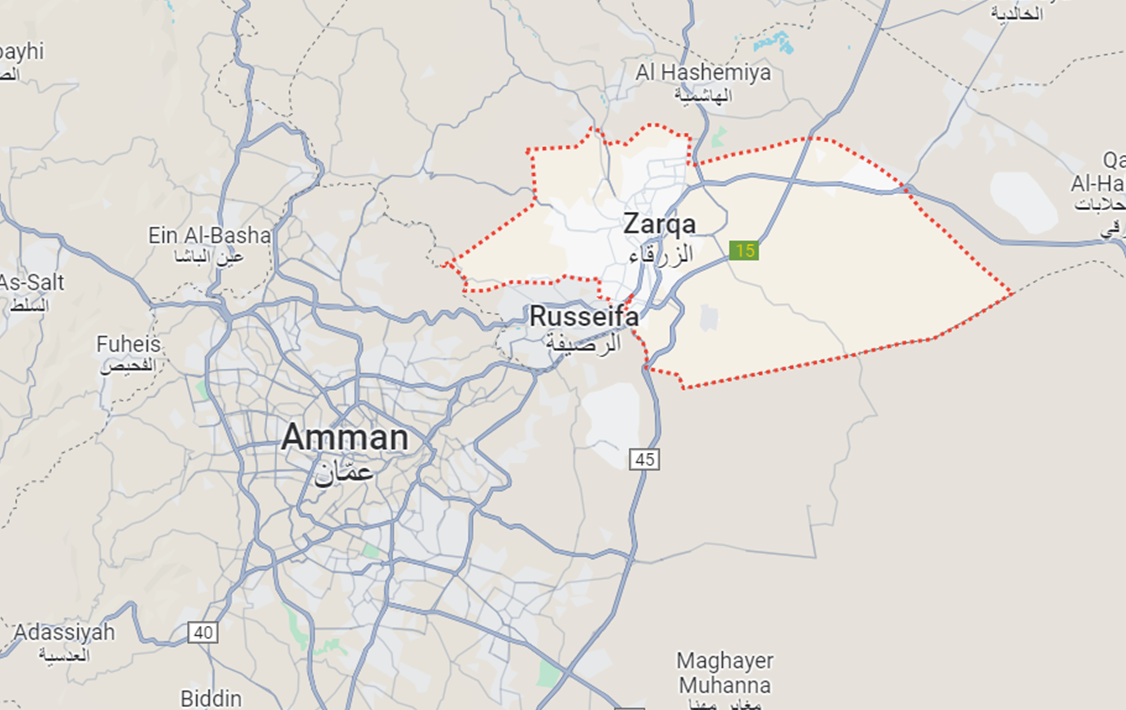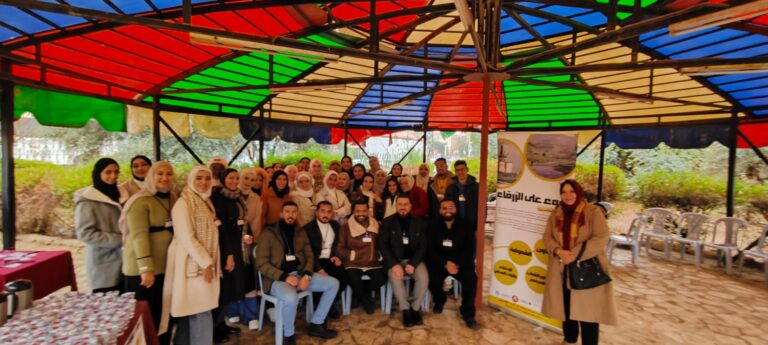Why Zarqa? Designing interventions for an ‘abandoned’ city

When you speak with people in Jordan about their perceptions of the city of Zarqa, you are often met with a swathe of opinions, few of which are good. In popular imagination, the city holds associations of the militarism, industry, poverty and extremism.
Making up the tail end of the Amman-Russeifa-Zarqa urban and economic corridor and with a population currently estimated to be in the region of about 800,000 people, Zarqa is most often described as ‘abandoned’ or ‘overlooked’. There is little written about the city, particularly about its history and the communities that have made it their home.
There has been human activity at the site of the city alongside the Zarqa river since the Neolithic period, and the area in and around the river has long been home to nomadic Bedouin communities (namely the Bani Hasan & Bani Sakhr). However, the founding of the city is actually rooted in forced migration. It is with the arrival of Chechen forced migrants in 1902 on the Hejaz railway, displaced from Russian expansion into the Caucasus, that a settlement starts to take shape. The city grows further with the 1948 arrival of Palestinians from the Nakba housed in Jordan’s first Palestinian refugee camp, Zarqa camp, and with further Palestinians arrivals from the Naksa in 1967. Zarqa is in close proximity to Amman but is more affordable than the capital and so it has continued to attract displaced communities, including Syrians and Iraqis. It is also home to migrant workers from South Asia who have come to work in Zarqa’s factories as well as Jordanians and Bedouin communities.
A number of Jordanian military bases are situated on the borders of the city. In the 1960’s Jordan’s first oil refinery was built on the outskirts of the city, and it became a major industrial hub from the 1970’s onwards with the discovery of phosphorus. These legacies are felt in the city itself, from the military apparel for sale in the souk to the environmental degradation of Zarqa’s river from industrial pollution.
When our research team started working in Zarqa in 2022 with refugee background young people we were struck by how little information and knowledge there was about the social dynamics, history and community of the city. Young people that we conducted research with expressed complex feelings about the city, that were largely rooted in frustration about how the city functioned, its lack of public spaces and cultural activities.
Our hope is that by working in partnership with young people that live in the city to co-design solutions, that Surfacing Zarqa begins some of the groundwork in addressing some of these frustrations. The oral history phase of the project is designed to explore and celebrate the diverse place based social histories of the city creating an accessible digital archive of place-based histories from different communities. Whilst the co-designed public space zone provides a space of inter-generational knowledge exchange through Taleeleh activities, the first of which will bring together oral history participants and youth researchers to reflect on their knowledge journey together. Alongside these activities we are also conducting other research activities with different groups of young people, community stakeholders, NGOs and CBOs in Zarqa about their perceptions of the city to get a fuller picture of what it means to belong to, and live in, Zarqa.
If the project is of interest to you, or if you live in Zarqa and want to contribute, please get in touch with our research team to chat more.
Sarah Linn s.linn@mmu.ac.uk
Hala Ghanem hala.ghanem@hu.edu.jo

